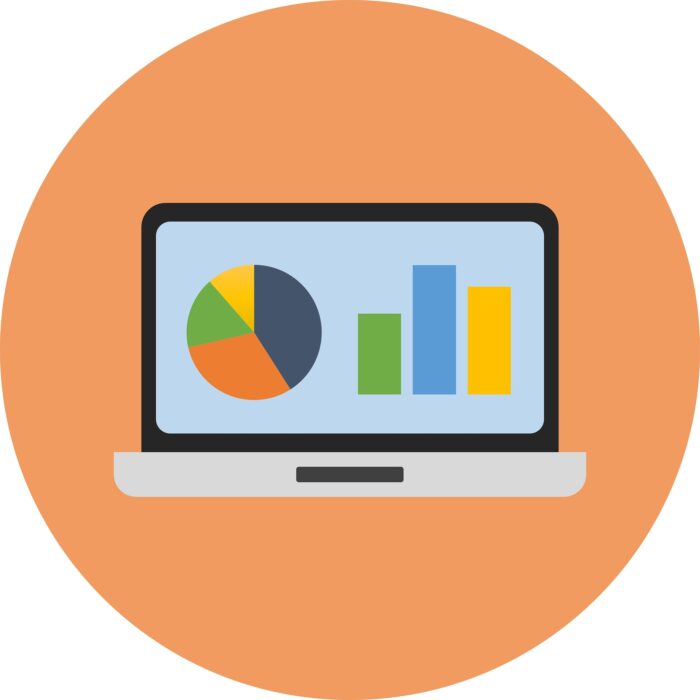Online advertising has a lot of elements to it but none are as core to online marketing as PPC. Compared to SEO, it is faster, more active in finding the right users, and provides instant feedback. This also makes it a very competitive field, requiring an advanced PPC strategy to leverage the full power of your advertising channels.
In this article, we’ll run through the basics of targeted ads and how to make the most of pay-per-click for startups.
When to Adjust Your PPC Strategy & Why
PPC should never be the only tool in your toolbox and should be further supplemented by other marketing activities. While a lot of fuss is made over “PPC vs SEO” or “PPC vs Content Marketing”, these are all complementary techniques. Still, it is important to know when to use which of these.
Generally, PPC is faster and targets responses more directly than both SEO and Content Marketing efforts. In that regard, it would be the fastest of the 3. After all, a good PPC strategy will contact your customers for you automatically using the best targeting available.
However, that doesn’t mean PPC is automatically the best choice. SEO and content marketing can be very good for audiences who are in the early stages of the funnel. This is natural since when we only have a passing interest in a product we want to research, weigh our options, and build brand consideration. In these instances, we compare competitors, look at whether we need the product at all, and window shop.
It is best to do a funnel analysis of your product or company and find out where your gaps are. If the gaps are in the later stages where, for example, people view competitors over your product due to inorganic/paid traffic, you may want to adjust your PPC strategy to meet audience receptiveness. If the issue is that people are not finding the right information about your services, it would be best to adjust SEO, provide information or engaging content, put out appropriate reviews/testimonials, and adjust your social media presence.
PPC Terms & Related Concepts

Here are a few terms and definitions you need to be familiar with to get started with your PPC strategy:
- CPC: Cost-per-click is the amount an advertiser will pay for every click on an ad. The higher the CPC the more they will pay for each measurable exposure. This value can be calculated with the following formula: (Competitor’s Ad Rank / Your Quality Score) + 0.01 = Actual CPC
- Quality Score: A score that search engines allot depending on your clickthrough rate relative to other ads in the same position, landing page quality, prior search engine performance, and relevance of your keywords.
- Ad Rank: The factor that determines ad position on a Search Engine Response Page. You can calculate it by multiplying Maximum Bid with the quality Quality Score.
- Ad bid: The amount you are willing to pay (per click) on an ad.
- CPM: This is the cost per 1000 impressions. Advertisers used it for paid social and display ads, especially where clicks are less important.
- Ad Text: This includes the text and the keywords that boost the quality of an ad.
- Landing Page: This is the page where the clicks go. More about landing pages and how to optimize them later in the article.
PPC Strategy Template
You can organize a PPC strategy in many different ways but there are a few core principles it must abide by:
- Goal-setting and Benchmarking
Set clear destinations, know your KPIs, and how to achieve objectives. Choose the right statistics to go with your goals. If you’re wondering how can google ads help you advance your business goals with automation, we have an article dedicated to that.
- Demographics
Know your audience. Perform target group research, create a buyer persona, find out the best platforms to reach them, and what messaging will be most appealing.
- Geographics and/or Placement
Draw boundaries around your target group. Know where you will and will not push your message while understanding what constraints this puts on your marketing.
- Campaign Theme and Targeting (Keywords, Negative Keywords, Related Terms)
Put together all the research from the previous steps and build the campaign. What will it target, what will it exclude, where is the competition, and how do you measure up?
- Budgeting
Now that you know what your campaign is all about, make sure you have the precise budget and personnel for it.
- Remarketing (if applicable)
Remarketing is the safety net of every campaign. It decides how you approach those people who seem interested but are afraid to go further.
- Evaluation
Going back to step 1, how did you measure up to the goals, KPIs, and objectives? Is it time to change course or try another platform or adjust your messaging? Revise and start over because there’s always room for improvement.
Competitive PPC Strategy

PPC campaigns should also take competition into account but first, you need to identify your direct opposition. Perform an ad analysis, keyword analysis, or ranking analysis to get an idea of what competitors compete with your ads.
Here are some useful metrics for comparing ad positions with your competition.
- Impression share: Comparing the frequency of the instances where you and your competitors received impressions. This is the number of impressions you receive vs. what you may have received sans competition.
- Overlap rate: The overlap between you and your competitor’s impressions.
- Position above rate: The rate at which a competing ad receives higher positions than yours during simultaneous display.
- Top of the page rate: The number of times a competitor’s ad is above your’s.
- Outranking share: How often your ad ranked higher in the auction than the competitors’.
From these data points, you can conclude what you need to do. Here are a few strategic options:
- Change your Keyword Strategy: You can try using different keywords to carve out a niche or get more specific with long-tail keywords to capture alternative slices of the audience.
- Use Google’s ‘Custom Affinity Audience’ Feature: This feature can be costly, but it can let you highjack the competition’s audience. It applies broad audience targeting and factors in consumer interests and activities such as website visits, placing your ad content ahead of the competition.
- Adjust your copywriting or design: Improve your content to get more eyeballs and stand out.
- Pricing: Sometimes the marketing isn’t the problem as much as the USP. Offer deals and try to outprice the competition.
- Competitive targeting: Find out who your competitor’s audience are and approach them with (for example) emails and offerings. Try to get them to switch over to you.
Measuring PPC Results
The first step to evaluating any digital marketing effort is tracking. Make sure you have your PPC and CPC tracking on point. Tools such as SEMrush or iSpionage can be great for rank tracking or setting benchmarks.
Device Optimization
Keep tablet and mobile PPC ads in mind and adjust for format. While mobile banner ad formats can vary, the standard banner sizes are 320×480, 300×250 and 320×50 for smartphones and 728×90, 768×1024, and 300×600 mobile ad units for tablets. Mobile users’ UX matters because Cellphones make up a majority of traffic, with numbers rising every year.
Landing Page Optimization

Tracking your landing page stats is also very important for any proper assessment of PPC data. Your ad is only as effective as where it takes your audience. Sometimes the problem can be with the Landing Page, in which case you should improve its UX or content. For more on which attributes describe a good landing page experience, read our full primer on it here.
This checklist should cover the main basics of an effective Landing Page design:
- Proper SEO elements are crucial along with associated keywords for your product (more on this is the SEO section)
- Good UX practices allow for a proper flow throughout the page
- Custom URLs help your SEO (builds more SEO authority). Avoid “.wodpress” or “.demopage” domains
- Appropriate keywords are necessary
- If you’re selling a product, use keywords related to competing products
- Long-tail keywords can be handy for more specific product categories
- Get proper backlinks by asking websites to link to you while keeping good quality outbound links as well
Here’s what should you avoid when developing a search-optimized website landing page:
- Avoid broken links: check your page performance regularly to find these
- Do not over-optimize with the same keywords: Google will penalize you for it
- Do not copy content: you can use data or quotes from others but original content is crucial
- Don’t worry about length: a common piece of advice is to make content longer. This is a misconception as landing pages that are longer tend to have more keywords and relevant info. Those are the things you should focus on instead of worrying about length
If you’re looking for a Pay-Per-Click consultant specializing in digital advertising intelligence, you’ve come to the right place. Promoguy’s services include everything from PPC strategy to social media to content writing.


